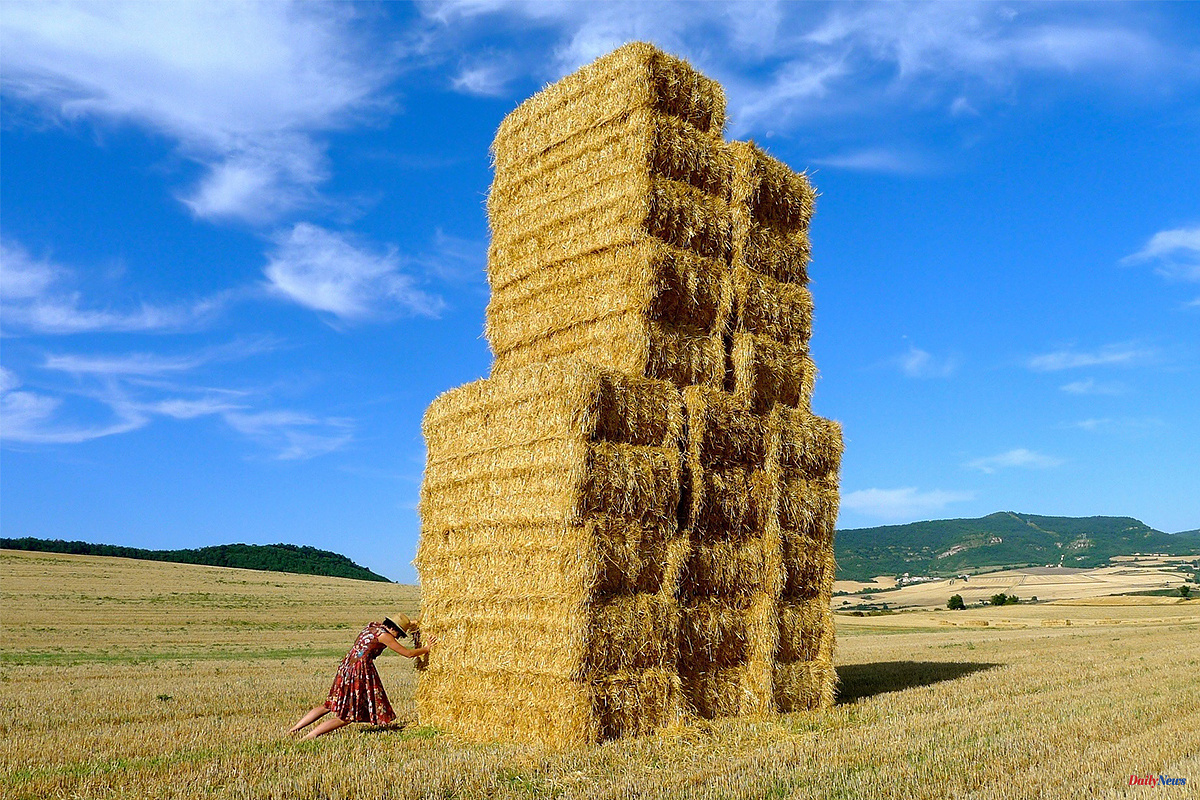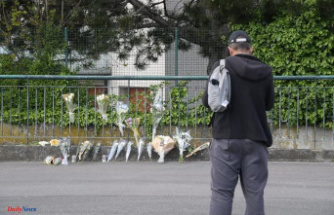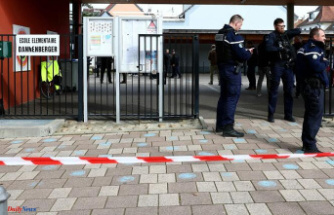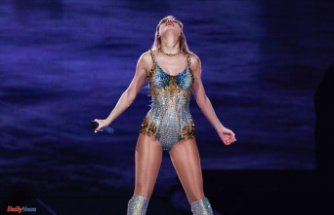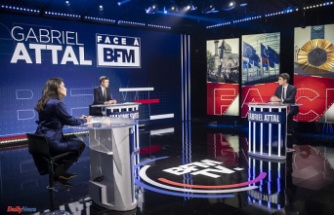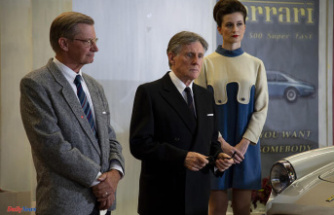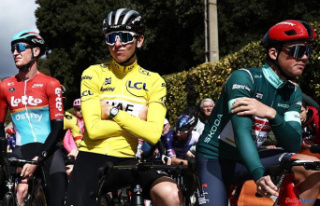To say that the Madrid City Council has been squatted by self-managed associations would be a very tempting headline. We would think of a political movement of radical action that seeks to dislodge local power. The exhibition Everything Else in CentroCentro doesn't go as far as that, but it is a potentially subversive assault. The fourth floor of the cultural space located in what used to be the Palacio de Comunicaciones and is now the headquarters of the Madrid City Council, has been occupied by 20 independent artistic projects, varied in terms of their form, content and objectives. An exhibition focused on Madrid but that seeks to make visible the alternative, although essential, framework of the creative fabric in our country.
One of the characteristic aspects of these initiatives is that they arise in unconventional locations. They expand on the margins, bringing creativity closer to the public with a horizontality that large institutions do not have. An apartment, a pedestrian walkway, a piece of furniture or a cigarette pack can be an exhibition container that is just as valid as the pristine white cube of art centers and galleries. In them proposals are generated that point to themes that will later become part of cultural debates. And they are the laboratory in which many artists and curators learn professionally at the beginning of their careers.
New forms of collaboration are in their DNA. Also, the questioning of the traditional models of exhibition and transmission of culture. «They are entities that are made from the base, from the immediate cultural context. It is self-organized because large resources are not needed to launch a project”, explains Ramón Mateos, artist and manager of one of these spaces, called Nadie Nunca Nada No, as well as co-curator of the Madrid exhibition. «They start from a precariousness that makes them so agile: today I put myself right here and, if I have to leave tomorrow, I leave».
"They began to emerge in the middle of the last century due to the appearance of surplus premises in industrial and abandoned areas that did not have a defined use and that artists used as a workplace," he continues. Hence the name they take at the beginning: artist run spaces (spaces managed by artists). We think of New York's Soho, in its large industrial warehouses, now luxury lofts, which since the 1960s have been used to exhibit their own work or that of the immediate creative circle. However, "the first self-organized spaces - the self-managed concept is more linked to political associations, according to Mateos - appear in Eastern Europe", to avoid communist censorship by proposing alternative languages and messages to the system.
Currently, most of these initiatives are self-financing until they can justify the public utility of the work they do. But their relationship with the administration, on which they largely depend, is complex due to the bureaucratic maze they face. It is not just money that they need to operate, as explained by the artist Mike Batista, who is part of La Limonera, in Tenerife, along with three other members: «From the administration protocols to the process of opening a bank account: everything is an obstacle course." Similarly, Idoia Zabaleta, from Azala, believes that public bodies should promote laws that “contemplate alternative hiring tools, beyond public competition. And that they recognize new legal frameworks to make possible other forms of public-community governance”.
"We started in Tenerife in November 2013 as a reaction to the enormous expenses of the museums that, in reality, are enjoyed by a small part of the population here," justify Lola Barrena Delgado and Dalia de la Rosa, promoters of Solar, which does not owe their name to the sun of the Canary Islands, but to the place where they develop their projects, urban plots. «We sought to cover the everyday space. It could not be that the artistic proposals could only be seen in the museum, ”they claim. Thus, their exhibitions are installed on plots that the owners give them selflessly and where the work acquires a new meaning. In addition, Solar publishes a publication entitled Interior Tourist.
The objective of Alimentación 30, on Calle Doctor Fourquet in Madrid -where some of the most important art galleries are lined up-, is "to question the opposition between alternative and institutional art". Launched in 2014, his interventions occupy the window of an old food store, inside which the family that owns the business still lives. "They have been very generous in opening their house for artists to make their productions," explains Valeria Maculán, who decides the creators who participate in this adventure. Important names in contemporary art such as Ángela Cuadra or Marlon de Azambuja have intervened in the few cubic meters that this initiative occupies.
In the city of Sagunto, two artists have just launched a new project, which joins others that already existed in Valencia, such as Pols, a10, Zape, Luna and Algo algo (EVAA). They have done it in the industrial warehouse that Carlos Peris, promoter of Saceca together with Raúl Lorenzo, used as a studio and workshop. It is located in an industrial estate, which invites us to "reaffirm the importance of the periphery in which we find ourselves, make visible the significance of the history of the towns surrounding large cities such as Sagunto." The next intervention in his space will be carried out by the promising Valencian artist Claudia Pastomas.
"We want people to think and get excited, put down their mobile for a while, feel a vibration and return home hating the time wasted on Netflix, wanting to make love more," they explain from the Plata collective, in Córdoba. Although they reinvented themselves with their current name in 2021, they started in 2010 with LaFragua, aimed at artist residencies. It is made up of more than 60 partners and its actions have a strong community charge. They think that "culture and art are a common space" in which to face social and ecological problems. «We try out new ways of 'being in contemporary creation'. The programming of a seminar with presentations becomes, why not?, a festival where you don't have to sit paying attention hour after hour».
One of the most relevant structures among the many that have emerged in recent years to work in rural areas is Campo Adentro, which has existed since 2012 in Ciudad Lineal and was invited to participate in the last Documenta in Kassel. Its mission is to highlight the problems of the field through artistic creation, while providing solutions and revaluing this cultural field. Crafts, agroecological production and ancestral knowledge are the subject matter and inspiration of his proposals, which include residences, workshops, reflective publications or art exhibitions. “We work with anthropologists, contemporary designers and artists, shepherds, and we even have a flock of sheep,” explains Amelie Aranguren, who coordinates this multidimensional group led by artist Fernando Dory. "Everything we do has to be between the useful and the emotional."
The residency model is central to many independent initiatives. Also in Azala, which is a point of creation and rural accommodation located in Lasierra, near Vitoria. "I am used to saying, half jokingly and using a sports simile, that Azala is a space for high artistic performance," says the choreographer Idoia Zabaleta, who received the prestigious Gure Artea award in 2017 from the Basque Government for this project. Artists, writers or creators largely oriented towards the performing arts, due to the magnificent facilities it has, can request stays that vary over time. The cross between the different residents and the natural environment marks, together with the nourishing personality of Zabaleta, the spirit of this place.
In 1977, the official of the L'Hospitalet town hall did not know under which heading to register the recently inaugurated Pubilla Cases (TPK) art workshop. "So, somewhat complicitly, he processed a permit from the Taekwondo Academy so that we could open," recall the artists Agustín Fructuoso and Xaro Castillo, who still run one of the longest-running independent art centers in Spain. And it was not born in Barcelona, but in the then peripheral L'Hospitalet, from where they have participated in Documenta de Kassel 1987, as well as various international biennials. The alternative teaching of the arts is central to his action, seeking to create a place “where the Academy was replaced by a shared discussion space, and where the hierarchies between artist-non-artist, teacher-student, etc., would disappear as much as possible. », they explain. TPK currently has 1,131 square meters in the old Tecla Sala industrial factory, although they acknowledge that, without subsidies, they would be forced to recover their alternative origin. As the German conceptual artist Joseph Beuys said, Fructuoso reminds us, "to make art you only need a warm and dry house."
They wanted to emulate Alberto García-Alix and his mythical magazine 'El canto de la crepilla', but it got out of hand. The artists Pepe Murciego and Diego Ortiz started with a standard publication in 1993 that gradually became an 'experimental assembly magazine' or 'object magazine'. A wallet, an apron with pockets or a sport shoe... Any everyday object was used to be intervened by artists, who invent specific works about them, always in limited edition. The last thing has been a lemon squeezer.
According to the criteria of The Trust Project

